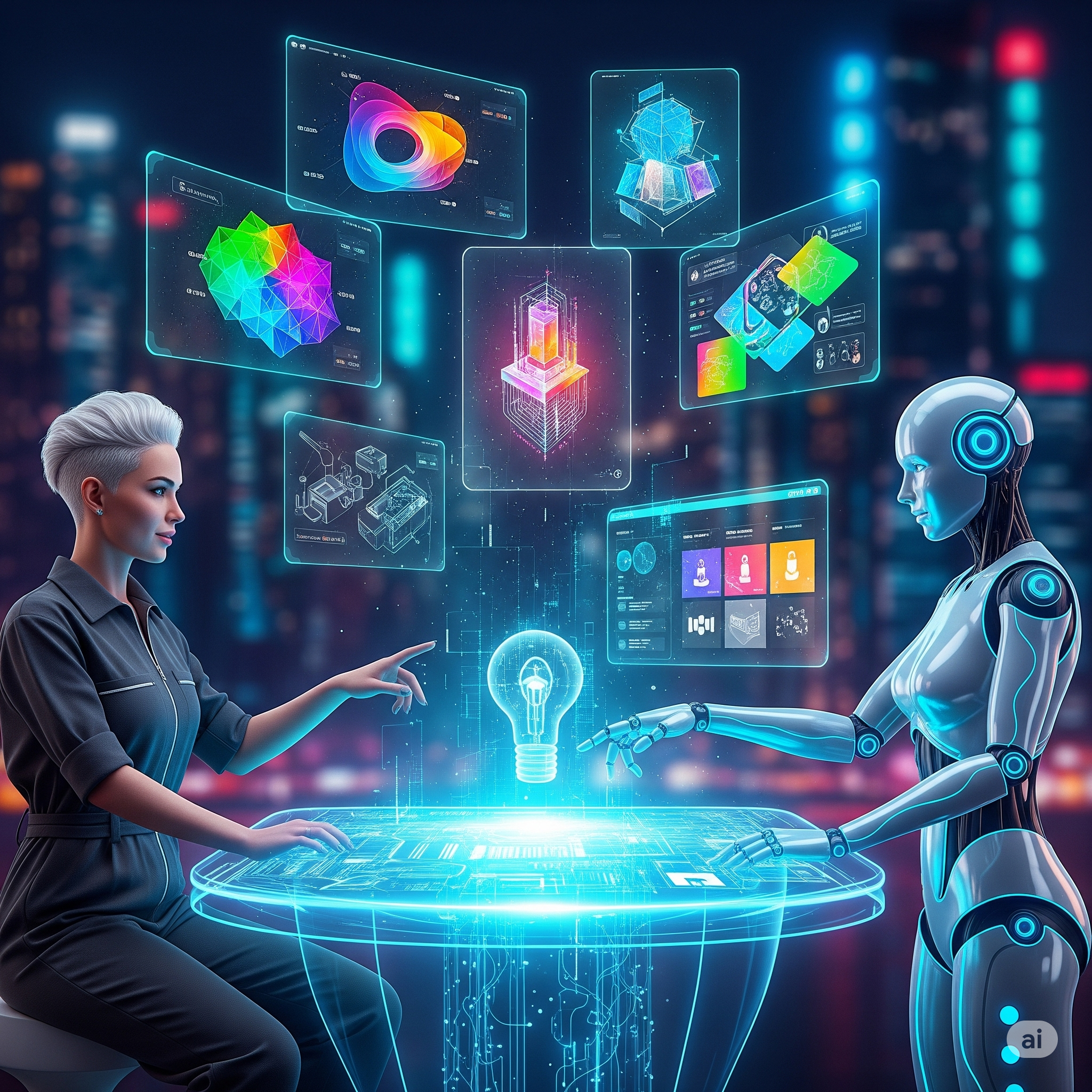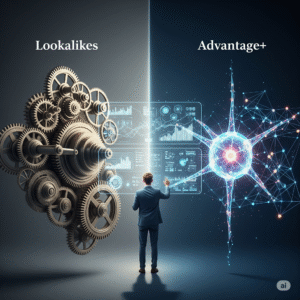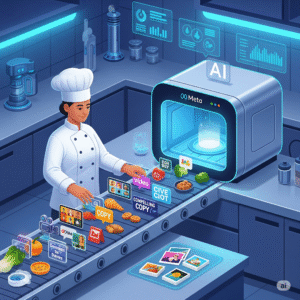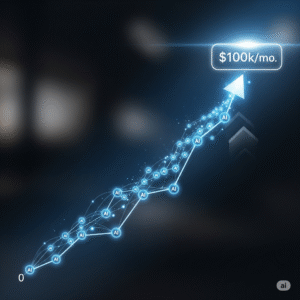Ever stared at a blank screen, a lump of clay, or a silent spreadsheet, waiting for a spark of genius that just won’t come? We’ve all been there. That dreaded creative block can halt projects, stifle growth, and drain motivation. But what if you had a collaborator available 24/7, brimming with endless ideas, data-driven insights, and the ability to execute tedious tasks in seconds? This isn’t a new hire from a rival company; it’s your AI creative partner. The conversation around AI is often dominated by fears of replacement, but the reality is far more exciting. We’re on the cusp of a new era of human-machine collaboration where AI isn’t the artist, but the ultimate muse, analyst, and assistant rolled into one.
This isn’t just a trend for tech giants in Silicon Valley. From solo entrepreneurs to marketing teams and product designers, harnessing an AI creative partner is becoming the definitive strategy for fueling groundbreaking innovation. In this guide, we’ll demystify the concept, explore real-world applications, and give you a practical roadmap to integrate AI into your own creative workflow. Forget the doomsday headlines; it’s time to learn how to partner with AI to not just work faster, but to think bigger and create better than ever before.
What is an AI Creative Partner, Really?
Let’s clear the air. An AI creative partner isn’t a sentient robot that will take over your brainstorming sessions (at least, not yet). Instead, think of it as a suite of intelligent tools and systems designed to augment, not replace, human creativity. It’s a collaborator that excels at tasks humans find difficult or time-consuming, like analyzing massive datasets for hidden patterns, generating hundreds of design variations in minutes, or drafting copy based on complex prompts. This frees you up to focus on the things humans do best: strategy, emotional intelligence, critical thinking, and providing the final, inspired touch.
The core function of an AI creative partner is to bridge the gap between raw data and brilliant ideas. It can process customer feedback, market trends, and performance metrics to provide insights that directly inform the creative process. This is a seismic shift from relying purely on gut instinct. Now, intuition can be validated and enhanced by powerful, data-backed evidence.
Beyond Automation: Your Collaborative AI Creative Partner
The real magic happens when you move past viewing AI as a simple automation tool. Automation handles repetitive tasks, but collaboration implies a two-way exchange. You provide the context, the goals, and the strategic direction. Your AI creative partner provides the scale, speed, and novel connections you might have missed. It can act as a tireless brainstorming buddy, offering unexpected angles and challenging your assumptions. This synergy is where true innovation AI thrives, creating a powerful feedback loop that pushes creative boundaries. It’s not about offloading your work; it’s about upgrading your creative process.
Unleashing Innovation: How an AI Creative Partner Transforms Industries
The impact of having an AI creative partner isn’t confined to a single field. It’s a transformative force reshaping how businesses across the spectrum conceptualize, create, and deliver value. By turning abstract data into actionable creative direction, AI is opening up unprecedented opportunities for growth and differentiation. Whether you’re in marketing, product design, or entertainment, an AI collaborator can provide a significant competitive edge.
Consider the fashion industry, where trends change in the blink of an eye. Predicting the next big thing has always been a high-stakes guessing game. But with AI, designers can analyze social media trends, runway photos, and sales data from around the globe to identify emerging patterns in colors, fabrics, and silhouettes, leading to more successful and timely collections.
Case Study: Stitch Fix’s AI-Powered Personalization
A fantastic real-world example is the online personal styling service, Stitch Fix. They don’t just use stylists; they arm them with a powerful AI creative partner. Their algorithms analyze a massive inventory of clothing and customer data—including style preferences, feedback on past items, and even Pinterest boards.
The AI doesn’t choose the final outfit. Instead, it presents human stylists with a curated selection of items that are highly likely to match a client’s taste and fit. The stylist then uses their expertise and personal understanding of the client to make the final selection. This human-AI collaboration is the core of their business model. The result? A highly personalized customer experience that feels both data-smart and human-centric, driving immense customer loyalty and business success.
From Blank Page to Blockbuster with Your AI Creative Partner
For marketers and content creators, the “blank page” is a familiar foe. An AI creative partner can make this a thing of the past. It’s not about having AI write a generic, soulless article. It’s about using it to accelerate every stage of the content lifecycle.
Here’s how an AI creative partner is revolutionizing content creation:
- Audience Research: AI tools can analyze forum discussions, reviews, and social media comments to pinpoint your audience’s exact pain points and questions.
- Ideation & Outlining: Stuck for ideas? Ask a generative AI like ChatGPT for 20 blog titles on a topic, a detailed outline for a whitepaper, or a script concept for a video.
- Drafting & Copywriting: Use AI to generate initial drafts for social media posts, email newsletters, or product descriptions. This first pass can then be refined and humanized by a human writer.
- SEO Optimization: AI can analyze top-ranking content and suggest keywords, headings, and structural changes to improve your search engine visibility, a concept detailed by sources like HubSpot’s AI marketing guide.
Your AI Creative Partner Toolkit: Essential Tools to Get Started
Ready to find your own AI creative partner? The good news is that powerful tools are more accessible than ever. You don’t need a Ph.D. in data science to get started. Here are a few key players that can form the foundation of your AI-powered workflow.
Generative AI and Ideation Tools
These are your brainstorming buddies. They excel at understanding natural language and generating human-like text and images based on your prompts.
- ChatGPT: Developed by OpenAI, this is the quintessential AI chat tool. Use it to brainstorm ideas, write drafts, summarize long documents, create outlines, and even write simple code. It’s an incredibly versatile first mate for any creative professional.
- Midjourney: For visual creatives, Midjourney is a game-changer. By describing an image in text, you can generate stunningly detailed and artistic visuals. It’s perfect for creating concept art, mood boards, or unique social media graphics.
Data Analysis with an AI Partner
To truly have an AI creative partner, you need to speak the language of data. These tools help you visualize and understand complex information without needing to be a statistician.
- Tableau: A leading business intelligence (BI) and data visualization tool. Tableau allows you to connect to various data sources (like sales figures or website analytics) and create interactive dashboards. Its AI-powered features can automatically identify trends and outliers, giving you creative insights at a glance.
- Microsoft Power BI: A strong competitor to Tableau, Power BI integrates seamlessly with other Microsoft products. It empowers users to transform data into rich visuals, allowing you to spot trends as they happen and make informed decisions about your creative strategy.
- MonkeyLearn: This is a no-code text analysis platform. You can use it to automatically analyze thousands of customer reviews, survey responses, or support tickets to understand sentiment and identify recurring themes. Imagine instantly knowing the top three features your customers are requesting—that’s powerful creative fuel.
Getting Started: A Beginner’s Workflow with an AI Creative Partner
Integrating a new process can feel daunting, but starting with an AI creative partner can be straightforward. The key is to start small, focus on a specific problem, and build from there. Don’t try to revolutionize your entire operation overnight.
Case Study: A Marketing Agency’s AI-Powered Pivot
Consider “Innovate Marketing,” a small digital marketing agency. They struggled to produce high-quality blog content for multiple clients quickly. Their creative team was burning out. They decided to adopt an AI creative partner workflow.
First, they used MonkeyLearn to analyze their clients’ customer feedback surveys, identifying the most common questions and pain points. This data-driven approach replaced hours of manual research. Next, they fed these topics into ChatGPT to generate multiple blog post outlines and headline ideas. Their writers then used these AI-generated frameworks as a starting point, saving them from the “blank page” and allowing them to focus on adding unique insights, brand voice, and compelling storytelling. The result was a 50% increase in content production and higher client satisfaction due to the content’s relevance.
Simple Steps to Integrate AI into Your Creative Process
- Identify a Bottleneck: Where does your creative process slow down? Is it ideation? Research? First drafts? Data analysis? Pick one specific area to target first.
- Choose the Right Tool: Based on your bottleneck, select one tool to experiment with. If it’s ideation, start with ChatGPT. If it’s understanding customer feedback, try MonkeyLearn.
- Start with a Clear Prompt: The quality of AI output depends entirely on the quality of your input. Be specific. Instead of “write a blog post about marketing,” try “Act as an expert content marketer. Write a detailed outline for a 1500-word blog post titled ‘5 Common Mistakes in Email Marketing’ for an audience of small business owners.”
- Review and Refine: Never use AI-generated content verbatim. The AI’s job is to provide a solid foundation. Your job is to fact-check, refine the tone, add personal anecdotes, and ensure it aligns with your strategic goals. As stated in a McKinsey report on AI, human oversight is crucial for maximizing value and minimizing risks.
- Iterate and Expand: Once you’re comfortable with one tool, start integrating another. Combine the data insights from Tableau with the content outlines from ChatGPT to create a truly data-informed creative strategy.
The Future of Collaboration: Humans + An AI Creative Partner
The rise of the AI creative partner does not signal the end of human creativity. It heralds its evolution. By automating the mundane and providing data-driven inspiration, AI is freeing us to be more strategic, more empathetic, and more innovative. The future belongs to those who can effectively collaborate with these powerful new tools, blending the best of human ingenuity with the best of machine intelligence.
This partnership is a dynamic one. It requires curiosity, adaptability, and a willingness to learn. The most successful creatives won’t be those who resist AI, but those who master the art of prompting, questioning, and guiding their digital counterparts.
Your next great idea might be just one conversation away—not with a colleague, but with your new AI creative partner. Embrace the collaboration, and you won’t just keep up with the future; you’ll be the one creating it.
AI Hyper-Personalization is Revolutionizing Professional Services
The Quantum Leap: How Quantum AI Impact Will Reshape Future Professions



